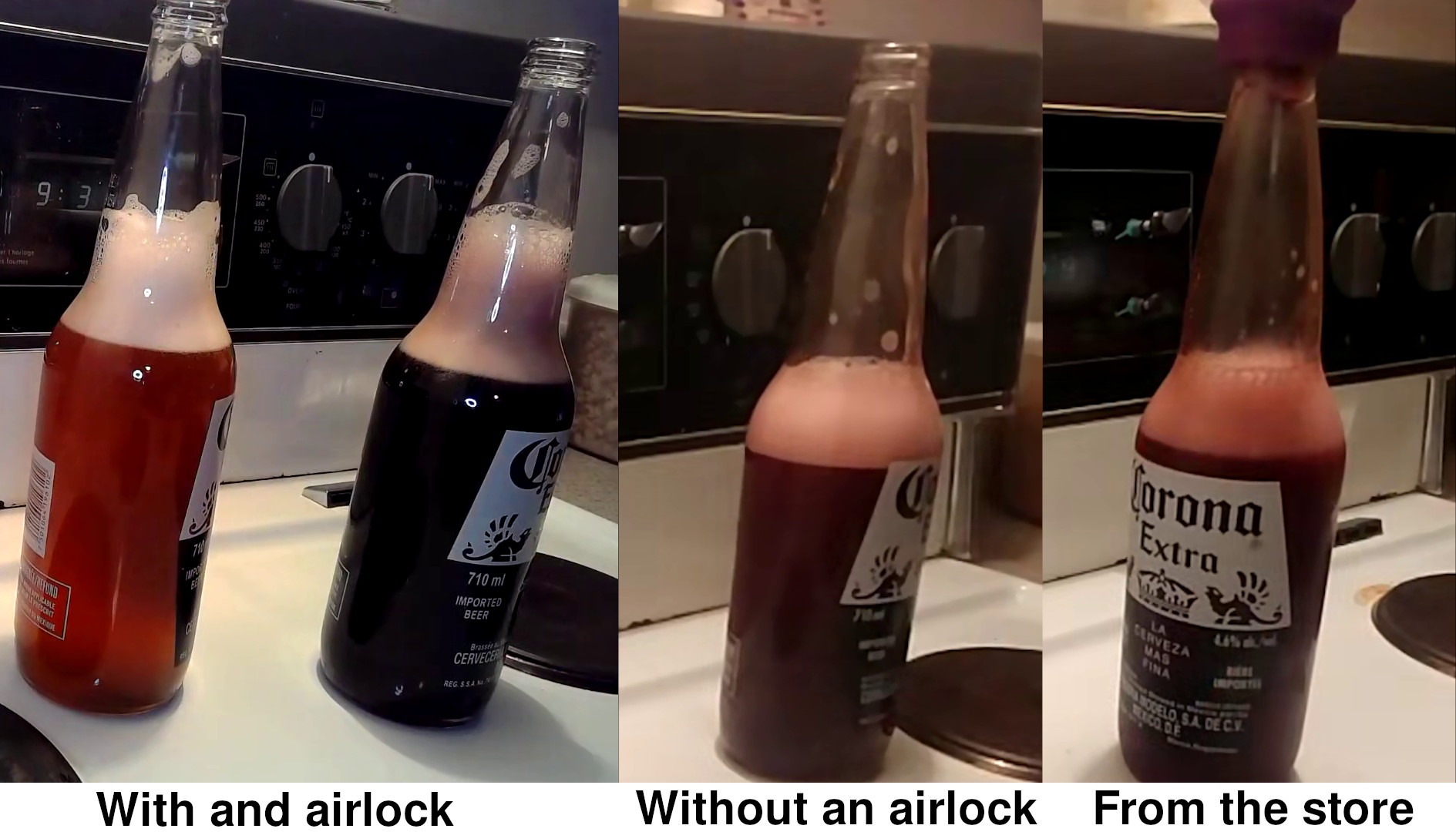Zurd
Active Member
Video: https://drive.google.com/file/d/11SGVVEN25bGtrMp-CzMMvfuGKPeYYXWu/view?usp=sharing
Well, title says it all, why is my wine so carbonated and with so much foam? It tastes fine, just like usual, foam is not really a problem but I'm curious.
You can see the date and hour at the bottom right but "2021-03-01" should be "2021-03-06". I have two tests in the video: "Argentia Ridge - White Zinfandel" and "Argentia Ridge - Pinot Noir". It's a long video but you can easily skip and see the foam and the bubbles in the bottles (harder to see with red wine though).
I don't understand, I keep shaking them and they keep making bubbles. At least with a 7-up, it stops doing foam and bubbles at some point but not my wine.
Lower the volume and check at 14:40, you can hear all the bubbles! I clean my bottles with a vinator and a small amount of Star-San which makes a lot of foam but it doesn't make bubbles.
See also the end completely, I stir with a drill for at least 5 minutes on and off at the secondary fermentation stage.
I haven't tested with a wine bottle from the store to shake it but I highly doubt it will do bubbly foam like that.
Well, title says it all, why is my wine so carbonated and with so much foam? It tastes fine, just like usual, foam is not really a problem but I'm curious.
You can see the date and hour at the bottom right but "2021-03-01" should be "2021-03-06". I have two tests in the video: "Argentia Ridge - White Zinfandel" and "Argentia Ridge - Pinot Noir". It's a long video but you can easily skip and see the foam and the bubbles in the bottles (harder to see with red wine though).
I don't understand, I keep shaking them and they keep making bubbles. At least with a 7-up, it stops doing foam and bubbles at some point but not my wine.
Lower the volume and check at 14:40, you can hear all the bubbles! I clean my bottles with a vinator and a small amount of Star-San which makes a lot of foam but it doesn't make bubbles.
See also the end completely, I stir with a drill for at least 5 minutes on and off at the secondary fermentation stage.
I haven't tested with a wine bottle from the store to shake it but I highly doubt it will do bubbly foam like that.





















































![Craft A Brew - Safale BE-256 Yeast - Fermentis - Belgian Ale Dry Yeast - For Belgian & Strong Ales - Ingredients for Home Brewing - Beer Making Supplies - [3 Pack]](https://m.media-amazon.com/images/I/51bcKEwQmWL._SL500_.jpg)




